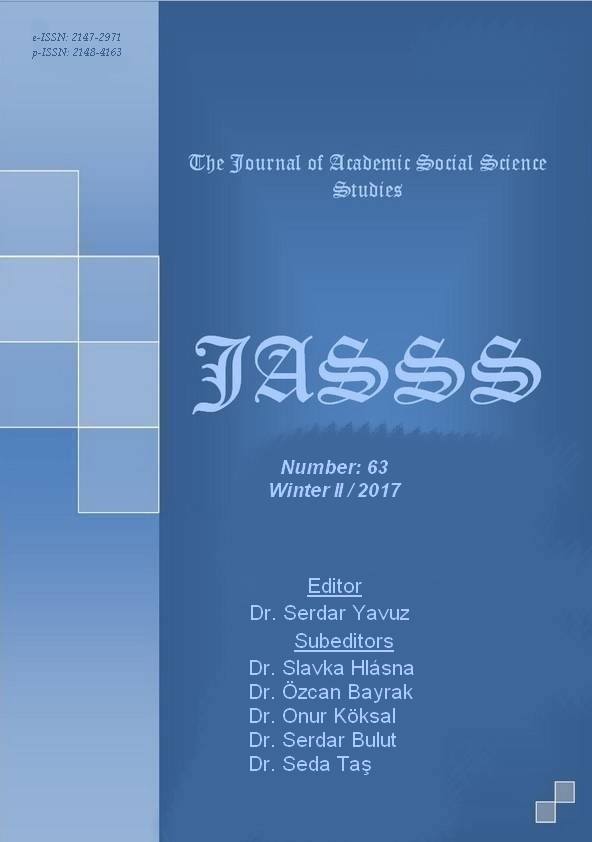Author :
Abstract
Kaldıraç oranı, firmaların varlıklarının yüzde kaçını yabancı kaynaklarla finanse ettiğini gösteren bir oran olmasının yanı sıra firmaların risk derecesinin bir göstergesi de olabilmektedir. Özellikle kaldıraç oranının yüksek olması durumunda firmaların risk derecesinin arttığı söylenebilmektedir. Diğer yandan, bu oran kaldıraç etkisi ile özkaynak karlılığının bir göstergesi de olabilmektedir. Firmalar ile ilgili bu denli önemli bilgiler içeren kaldıraç oranı üzerinde makroekonomik değişkenlerin etkisini ölçmek amacı ile Borsa İstanbul’da (BIST) kayıtlı, 2003-2013 yılları arasında faaliyet gösteren ve verilerine tam olarak ulaşılabilen mali sektör ve holdingler dışında kalan 126 imalat sanayi firması araştırmaya dahil edilmiştir. Makroekonomik değişkenler Üretici Fiyat Endeksi (ÜFE), Faiz Oranı (DİBS faizi), Sanayi Üretim Endeksi ve Döviz Kuru (USD) bağımsız değişken olarak, 126 şirketin kaldıraç oranları (Toplam Yabancı Kaynaklar/Toplam Varlıklar) ise bağımlı değişken olarak modele dahil edilmiştir. 3’er aylık dönemler halindeki verilerin kullanıldığı çalışmada, öncelikle Genişletilmiş Dickey-Fuller (ADF) ve Phillips Perron (PP) birim kök testleri uygulanmıştır. Böylelikle değişkenleri aynı seviyede durağan olup olmadıkları tespit edilmiştir. Kısa ve uzun dönem parametreleri hakkında bilgi vermesi amacıyla çalışmada, Pesaran ve Shin (1999) ve Pesaran, Shin ve Smith (2001) çalışmalarında tanımlanan sınır testi ve gecikmesi dağıtılmış otoregresif model (ARDL) ile incelenmiştir. Burada hata düzeltme teriminin katsayısının pozitif olması modelin dengeden uzaklaşılması, negatif olması ise dengeye yaklaşılması anlamındadır. Çalışmanın bulgular kısmında kurulan model için uygulanan sınır testi F istatistiğine göre %1 seviyesinde eşbütünleşme ilişkisine sahip olabileceği sonucuna ulaşılmıştır. ARDL testi sonuçlarına göre uzun dönemde bağımlı değişken olarak belirlenen Kaldıraç Oranı ile üretici fiyat endeksi (ÜFE) ve Sanayi Üretim Endeksi arsında pozitif yönlü bir eşbütünleşme ilişkisi olduğu tespit edilmiştir.
Keywords
Abstract
Leverage ratio is the ratio which indicates what percentage of firms’ assets are subsidized through foreign assets. Besides, it can be an indicator of firms’ risk degrees. Particularly when the leverage ratio is high, the risk degree of firms increases. On the other hand, this ratio can be an indicator of the return on equity by the leverage effect. So as to assess the effect of the macroeconomic variables on the leverage ratio which includes such significant data about the firms, 126 manufacturing industry firms listed in ISE, active between the years of 2003-2013 and excluded from the financial sector and holdings of which data could be reached has been included in this study. Macroeconomic variables (producer price index (PPI), interest rate (interest of government debt securities), industrial production index and exchange rate (USD)) have been included in the model as the independent variables, while the leverage ratios of the 126 firms (total foreign assets/total assets) have been taken as the dependent variables. In the study, in which the quarterly data have been used, primarily, augmented Dickey-Fuller (ADF) and Phillips Perron (PP) unit root tests have been applied. Thus, it has been determined whether the variables are stable at the same level. In order to obtain the information about the short and long term parameters, the bound test and autoregressive distributed lag model (ARDL), which were defined in Pesaran and Shin’s (1999) as well as Pesaran, Shin and Smith’s (2001) studies, have been applied. At this point, that the coefficient of error correction term is positive means the model digresses the balance, and conversely, that it is negative means the model approaches the balance. According to the bound test F statistics applied to the model set up in the findings section of the study, it has been concluded that a cointegration relation may exist at 1% level. As for the ARDL test results, it has been found that there is a positive cointegration relation between the leverage ratio and producer price index (PPI) as well as the industrial production index.





